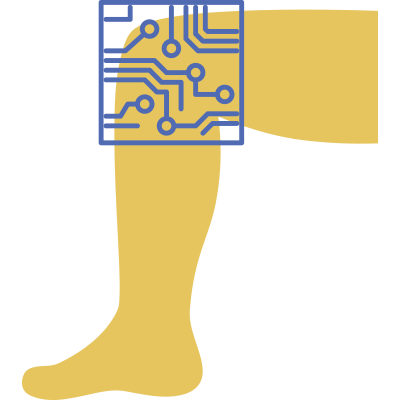
As adults progress into old age, many become physically frail, characterized by a slower gait, lack of appetite and low levels of physical energy. Often, they also begin experiencing cognitive decline: Words become trickier to find, or following the plot of a complicated novel proves futile. “I’m not as sharp as I used to be,” is a common refrain.
Until fairly recently, says geriatrician Peter Abadir, the 2021 Salisbury Family CIM/HAP Scholar, geriatrics researchers have been “siloed” in their efforts to get at the roots of decline in aging. Some scientists and clinicians have focused on the mechanisms behind physical frailty, while others have zeroed in on cognitive decline.
“While that may be useful for getting grants, the reality is that most older people will decline both physically and cognitively,” he says, “and it is vital for us to gain a better understanding of central mechanisms that link both physical and cognitive decline — because they feed into each other.”
Abadir and other researchers affiliated with the CIM-supported Johns Hopkins Human Aging Project (HAP), including HAP director Jeremy Walston, the Salisbury Family Foundation CIM Scholar, are at the vanguard of new research aimed at better defining “cognitive frailty” — the simultaneous presence of physical frailty and cognitive impairment without dementia. By building consensus around a definition of cognitive frailty, including criteria for diagnosis, the HAP researchers aim to create a pathway for earlier detection and prevention. The ultimate goal? Improved quality of life in our later years.
“It’s important to start looking at the bigger picture,” says Abadir.
One promising strategy involves leveraging the power of technology. Abadir is principal investigator for the Johns Hopkins Artificial Intelligence & Technology Collaboratory for Aging Research (AITC), which was established in November 2021 with $20 million in funding from the National Institute on Aging. The goal of the AITC, which falls under the umbrella of the Human Aging Project, is “to spur development of artificial intelligence devices to improve the health of older adults and help them live independently for longer,” notes Walston.
Abadir says that it can be difficult for geriatricians to detect and measure decline in their patients in the earliest stages: “Changes in grip strength or in patients’ verbal abilities can be subtle.” That’s where technology comes in.
Research teams within the AITC are tapping into advances in wearable devices and sensor technology to create devices aimed at catching and measuring minute changes in a person’s gait or cognitive acumen. The researchers will soon be able to begin testing these devices with older patients and their caregivers at a new 10,000-square-foot hub on the Bayview campus. It will be jointly operated by the Johns Hopkins University School of Medicine and the Whiting School of Engineering, and allow AITC-affiliated engineers to work closely with clinicians and other researchers to come up with technology-driven solutions to some of the biggest challenges older people face.
This new engineering–medicine alliance, co-led by Abadir from the School of Medicine and Najim Dehak (a HAP Scholar and co-director of the JH-AITC pilot core) from the School of Engineering, “marks a pivotal moment in our quest to redefine aging,” says Abadir.
He adds, “By blending the cutting-edge technologies of engineering with the deep insights of medicine, this partnership heralds a promising future for the Human Aging Project. It represents not just a collaboration between disciplines but a unified front to improve the quality of life for older adults.”
Abadir envisions a day, not too far off in the future, when an older person will walk down a sensor-equipped hallway to her exam, and her gerontologist will say, “Mary, your gait has changed very subtly since your last visit. Let’s get you signed up for some physical therapy so that we can keep you active.”
As Abadir and his HAP colleagues continue their efforts to tease out the characteristics of cognitive decline, he says he is inspired by the potential to dramatically improve life for many older adults. “We have a golden opportunity to identify individuals in the earliest stages of cognitive frailty and to stop or slow decline before it progresses,” he says.